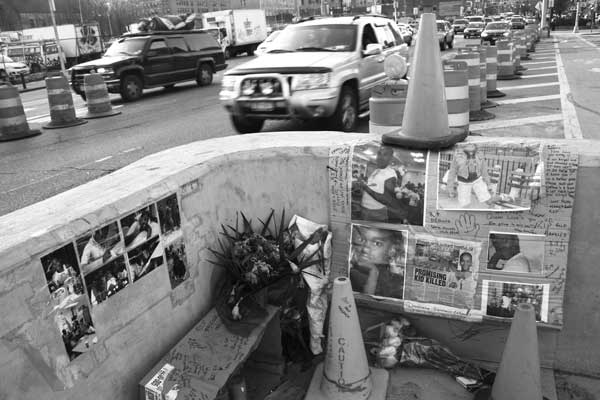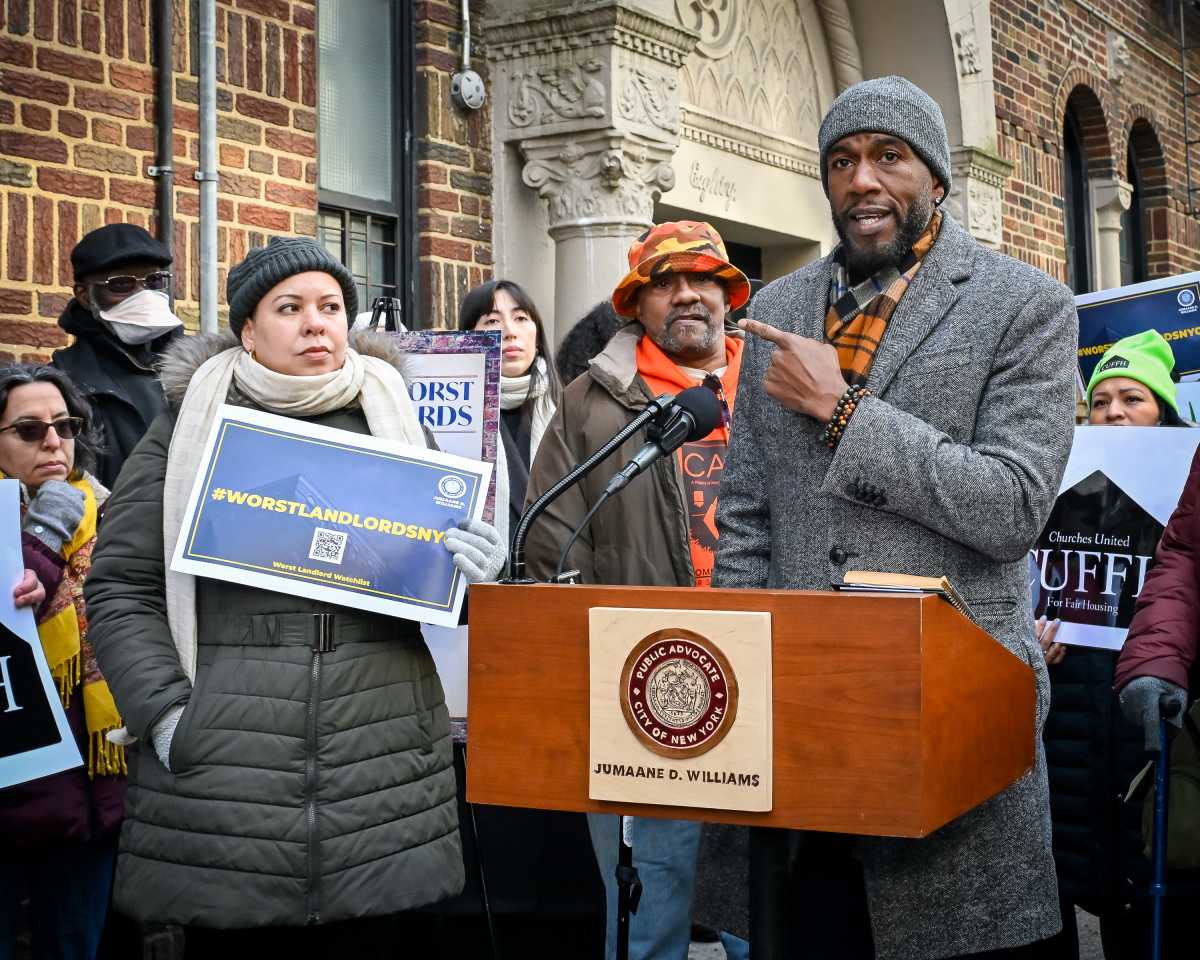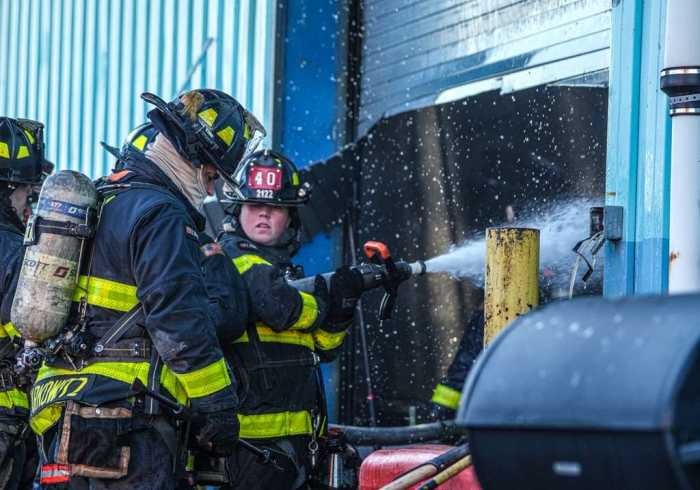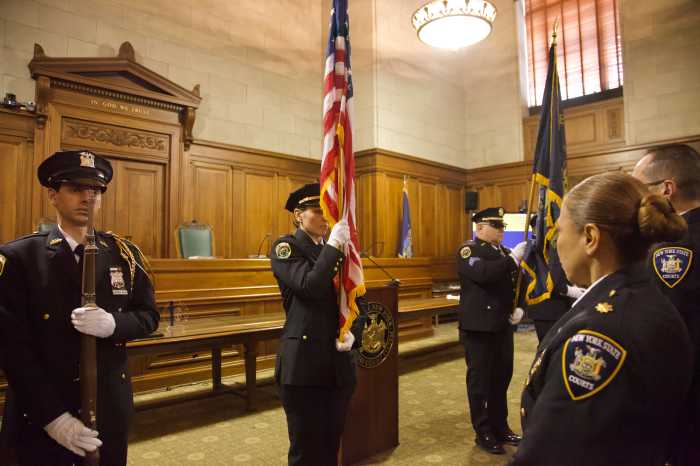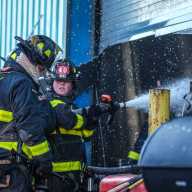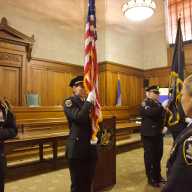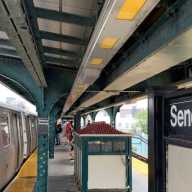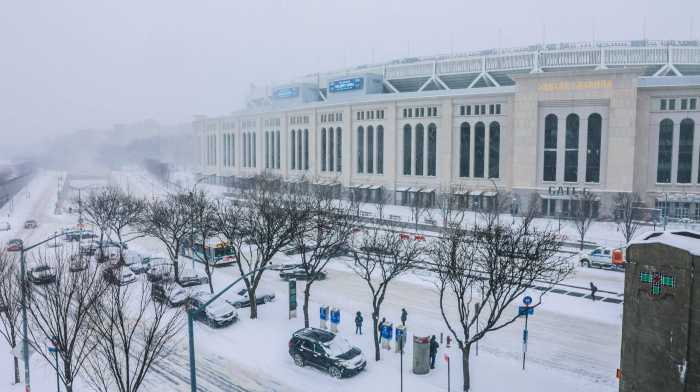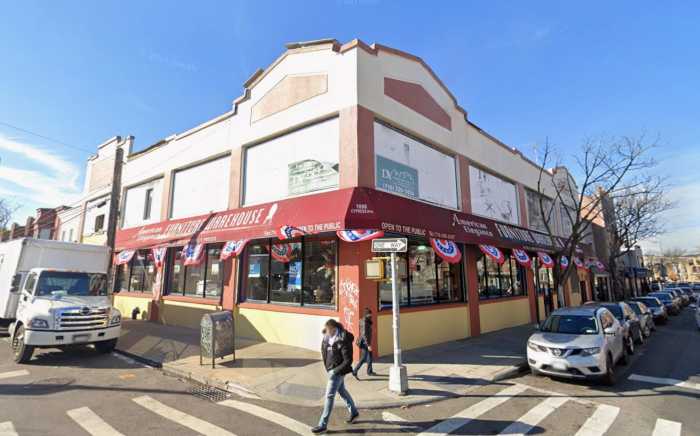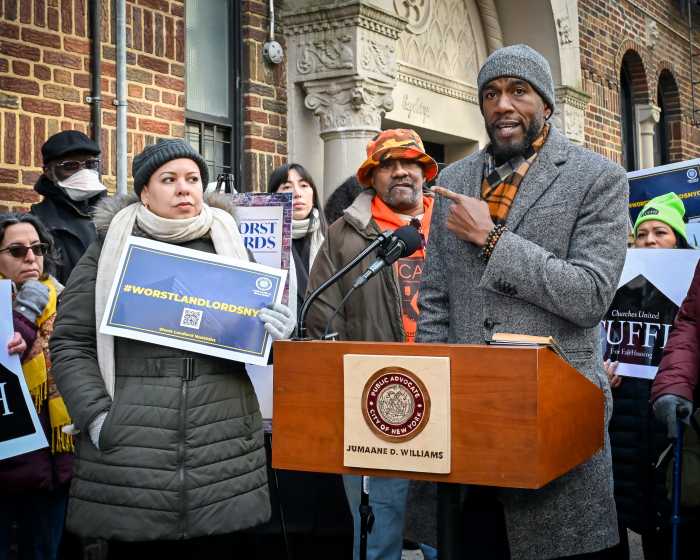 [/media-credit]
[/media-credit]
- A memorial by the Williamsburg Bridge to Dashane Santana, 12, who was killed crossing Delancey St. last month.
BY ALINE REYNOLDS | Tina Carr, a resident of the Seward Park Co-op, has always been nervous whenever crossing the precarious intersection at Delancey and Clinton Sts. But now her jitteriness has reached new levels, after having witnessed the death of Dashane Santana, 12, who was fatally struck by a minivan there the afternoon of Fri., Jan. 13.
“I saw a girl lying in a pool of blood. It was very traumatic,” said Carr, who has three young children of her own. “I cross here between two and four times a day.”
Carr is one of the many community members that bravely dash across Delancey St. at the foot of the Williamsburg Bridge every day to try to make it from one side of the extra-wide street to the other before cars start barreling in their direction. If they don’t wish to stand in the median, they have less than half a minute — exactly 22 seconds — to traverse 10 lanes of vehicular traffic.
The Delancey St. corridor, which stretches westward from the bridge to Bowery, is considered one of Manhattan’s deadliest thoroughfares. A total of 82 accidents occurred at the intersection of Clinton and Delancey Sts. between spring 2008 and spring 2011, 13 of which involved pedestrians or bicyclists. During the same period, 80 accidents took place at the intersection of Essex and Delancey Sts., 29 of which involved pedestrians or bicyclists, according to data from the state Department of Transportation.
In an effort to lower the accident rate, the city’s Department of Transportation has prepared a new Delancey St. safety plan. This plan will be unveiled at a Community Board 3 “Special Transportation Committee Meeting on Delancey St.,” to be held next Wed., Feb. 8, at 6:30 p.m. at the Seward Park Co-operative, 268 East Broadway at Montgomery St. Scott Gastel, a D.O.T. spokesperson, declined to comment on the initative’s details prior to the meeting.
The plan is largely the outgrowth of a working group state Senator Daniel Squadron convened in the fall to brainstorm on safety improvement tactics for Delancey St. Since last August, the city has installed pedestrian countdown signals, increased pedestrian crossing times and extended median refuge areas along the Delancey corridor. D.O.T. is now finishing up an extension of the pedestrian refuge area in the middle of the Delancey-Clinton intersection, where Santana was killed.
But Lower East Siders and their elected officials contend these changes aren’t enough.
“Delancey needs nothing short of a safety overhaul now, which means looking at solutions like stop lines and turning restrictions, as well as improved medians and crossing times,” said Squadron. “I look forward to the new plan, and I hope that it moves us toward the safer Delancey that is critical to all users.”
Teenager Lucelny Ruiz, who crosses the Delancey-Clinton intersection five times a day, said she often feels she’s risking her life.
“If they were to change the timing in the crossing and give at least 40 seconds, it would be better,” Ruiz said. “Now, if I want to get across, I have to run.”
Gastel said crossing times adhere to federal guidelines, and that signals are designed to allow pedestrians to make it to at least the median, if not to the other side of the street.
“Each intersection is different, and signal timing is based on criteria, such as intersection geometry and traffic and pedestrian volumes,” he noted.
Rita Morales, 71, who also crosses the dangerous intersection daily, charged that cars often run red lights.
“They must have a policeman here, because people do whatever they want when they drive the car,” she said. “They don’t care if they kill you or kill me.”



